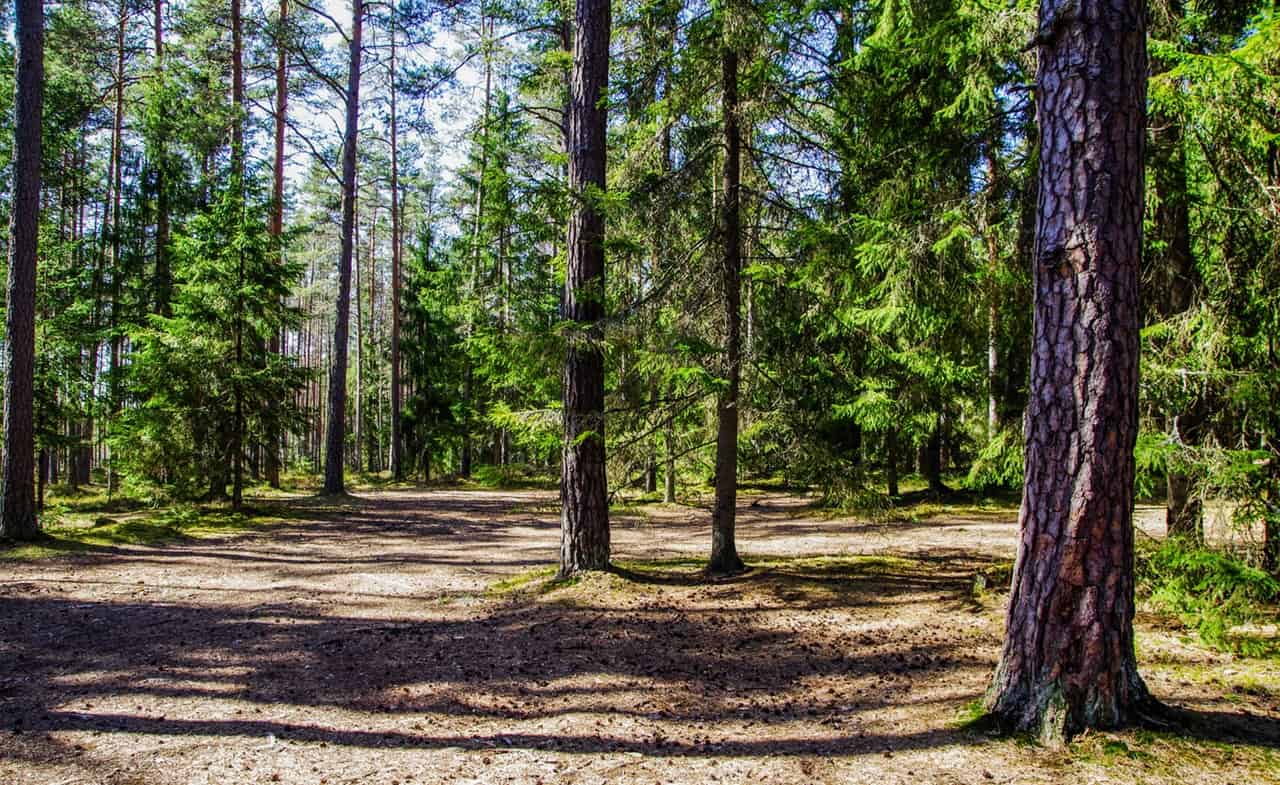The best food plot seed for low light and shady conditions are cereal rye, wheat, oats, subterranean clover, ladino clover, and some brassicas. Each of these seed types will germinate in less than ideal conditions, but one might be better than another based on site conditions. It’s best to plant a mixed variety of these seed types to encourage a successful planting.
When talking about planting in low light conditions, its easy to get caught up in which seed types will grow the best. We are going to cut right to the chase and talk about the seed but please follow the basic food plot-planting principals to ensure your seed germinates successfully. It’s important to keep in mind the other factors that are necessary for a successful food plot.
You can’t talk about low light food plots without talking about cereal rye. This seed type is an absolute workhorse and is one I use on my own property. It can grow in some of the most extreme conditions and establish a deep root system while producing a lot of forage. This is a great seed type to plant if you have dry soil conditions.
If the rye doesn’t seem to be doing that well, it responds well to nitrogen. A little bit of fertilizer goes a long way.
Cereal rye is going to hold your soil in place. This is important to food plotters looking to plant in an area where erosion is common. The root system runs deep and does a great job holding soil in place.
You don’t need any heavy equipment to plant cereal rye. All you need to do is spray weed killer on the area you are planting and kill everything off. It might take a few applications of weed killer applied a couple weeks apart before you have enough soil exposure to spread your seed. Once all the weeds are dead, simply broadcast your seed with a seed spreader right before a rain and watch it grow.
Cereal rye is going to be one of the first plants to grow in the spring. I have found a lot of shed antlers over the years just because of this one plant. When there is only one green food source in the area, the deer will gravitate to the plot. In the Midwest, the timing of early spring green-up and buck antlers dropping seem to occur at the same time.
I recommend planting cereal rye with the clover types listed later in this article.
Buy this bag of Cereal Rye on Amazon
Wheat is a super attractive plant to whitetails. Just like the rest of the seeds types mentioned in this article, wheat will grow successfully in shaded areas. It will grow well in many different soil types and will even do well in dry environments. Even better than that, wheat has an incredibly high rate of germination. It grows best in heavy wet soils such as clay but performs well in most soil types.
If you don’t have an issue with deer eating every single plant in your food plot then wheat is an excellent choice to include in your low light food plot mix. When you plant this seed type you are essentially putting deer candy on the ground.
Another thing to consider before buying wheat is checking to see if the variety of wheat you are buying is aweless or not. Awns are the seed heads that look like hair. Deer prefer awnless wheat. Who can blame the deer for not wanting to eat a hair-like seed?
I recommend planting wheat with the clover types listed later in this article. I also like wheat over oats if you live in areas that see extreme cold. Oats have a better chance of dying off.
Oats are also candy to the deer and grow well in low light conditions. Oats and wheat seem to have many of the same qualities and attractiveness to deer. As a general rule of thumb, I would suggest planting oats if you are planting them south of interstate 70. If you live above that line then stick with wheat.
Subterranean clover is the best clover type you can choose to plant in dry shaded food plots. Subterranean clover is commonly used in Texas and California so you know this clover can take the heat.
Even though this seed type is commonly planted in the acidic soils of southern states, it also grows very well in wet environments. You can literally plant this clover in almost every state.
This type of clover will grow in tight piles close to the ground that helps prevent weeds from growing and also shades out the soil, helping it retain moisture. Weed suppression is one of the best qualities of this type of clover. It also does very well at reseeding itself for continued growth year after year.
Planting this seed is very easy. Clover is a small seed that does well reaching the soil to make good contact for germination. I encourage planting clovers with a nurse crop such as cereal rye or wheat.
All perennial clovers will need a little bit of maintenance to keep them flourishing year after year. Mowing is a great way to manage weeds, and taking soil test every year to understand fertilizer needs will help you understand what you need to feed the soil to keep your clover from dying off.
Just like subterranean clover, Ladino clover is a perennial clover that will come back year after year with proper maintenance. It also does very well in areas with a low amount of sunlight.
Ladino might struggle to do well is in extremely dry environments. If you live in a southern states like Texas or Georgia, planting ladino in shaded areas will give you better success at sustaining a stand of ladino clover for several years. The shade will help protect this clover type and retain soil moisture.
Ladino clover needs soil with a PH of 6 or 6.5. When you plant ladino clover you don’t want to plant it too deep. Broadcasting on top of the ground before a rain is the way to go. It’s a good idea to mix in inoculants with your seed in the bag prior to spreading on the ground.
Like I mentioned before, I recommend planting clovers with a nurse crop such as cereal rye, winter wheat, oats, or a combination of these. You will have to do a little maintenance each year to control weeds and help the clover thrive by fertilizing according to your soil test results.
Brassicas are one of the most popular late season food sources for deer. It comes to no surprise that many people have tried planting them in shaded areas. The results of brassicas in shaded areas are mixed.
Brassicas do not do well in low PH soils. Shaded areas most likely will not have an ideal PH in the first year of your planting.
My recommendation if you want to plant brassicas in a new food plot is to try planting them after your first year. This will give you time to amend the soil as needed. Also, I recommend planting a mix of seed types. Aim for having at least ½ acre of planting area if you plan to plant brassicas.
To be honest, I don’t typically plant brassicas in shaded areas because a mix of clovers, wheat, rye, and oats has performed so well for me. It grows good and deer are very attracted to it. If you must plant brassicas then soil prep and germination is as easy as planting clovers. The seed is tiny so making good seed to soil contact is not so difficult.
Conclusion
Planting food plots for deer in low light situations is one of the most challenging and rewarding projects. We deer hunters know that big mature bucks like staying close to secure cover so shaded food plots makes a lot of sense.
There are a lot of seed types that do well in shaded areas but some seeds do better than others depending on your food plot location and specific conditions. If I haven’t made it clear by now, let me say it again. I prefer planting a variety of seed types. This will diversify your risk of food plot failure and offer the deer a variety of options to eat from.
Make sure you follow the basic food plot planting principals if you want to have a successful food plot. Your odds of success are a little more difficult than if you were planting in a wide-open field. If you can thin out some surrounding trees to invite more sunlight into the plot then your odds will increase that much more and help make deer feel more secure while feeding within the plot.

